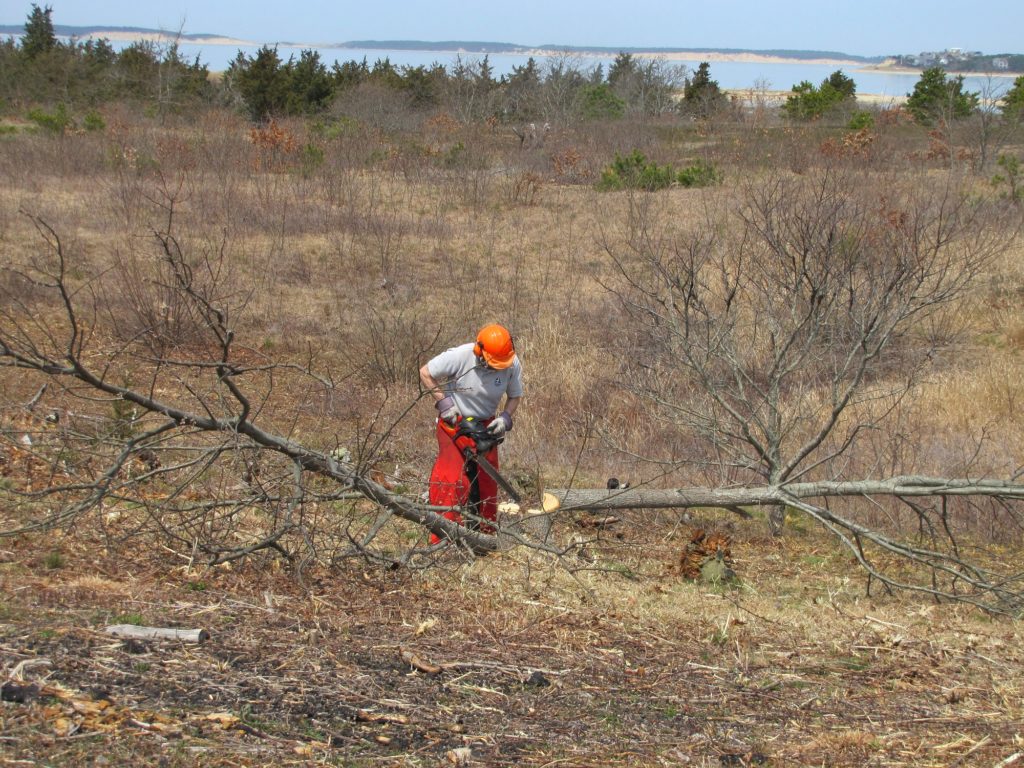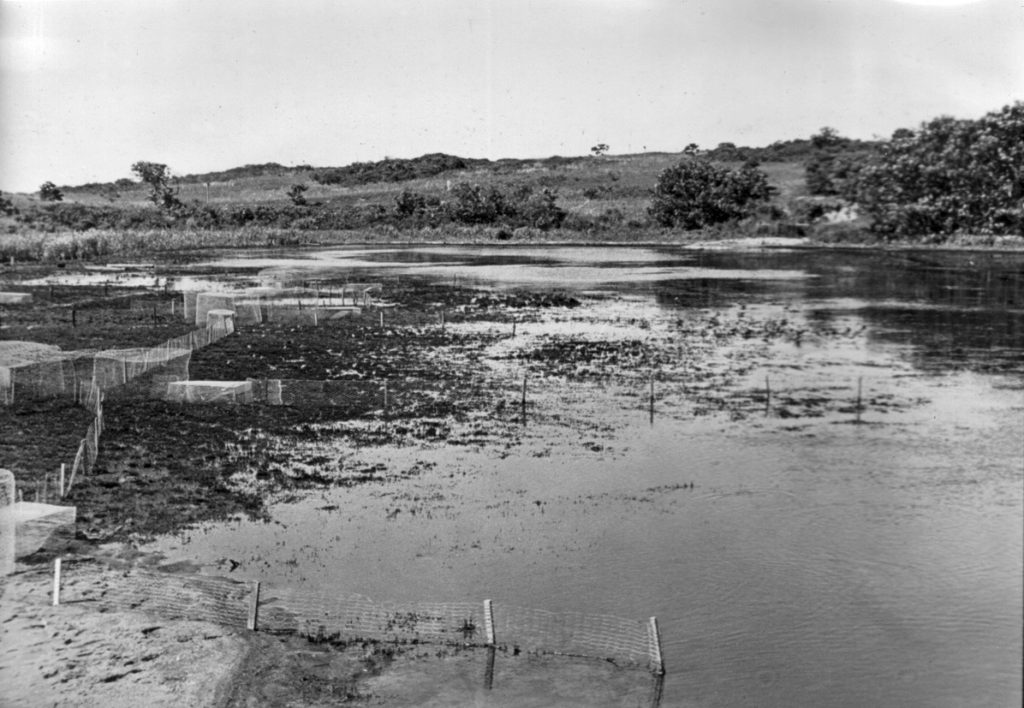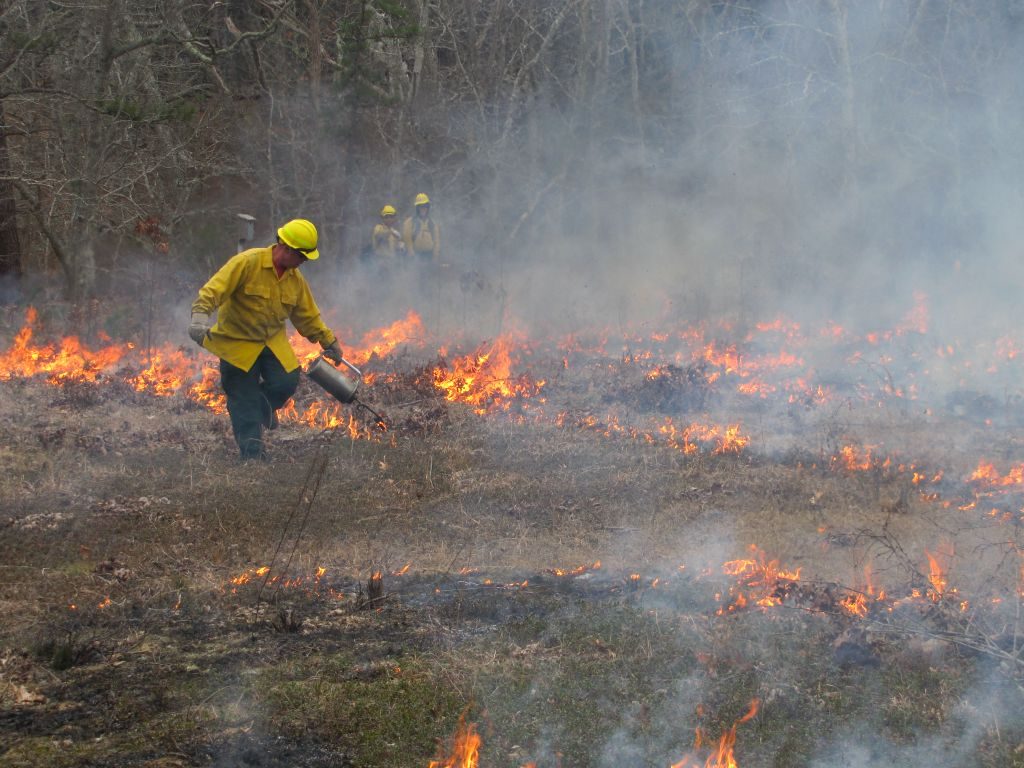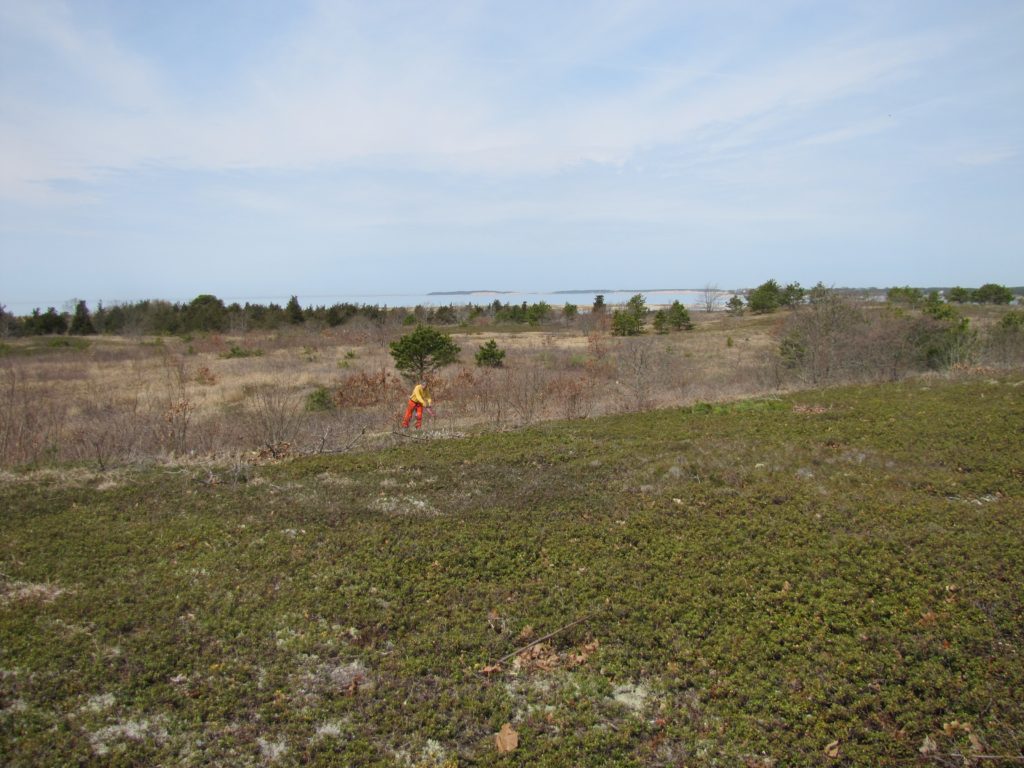
Property assistant Jim Bougas takes down an oak. Which will return.
To some, slashing and burning trees and shrubs at a wildlife sanctuary may not make sense.

A so-called prescribed burn in the bird box field in 2011. A healthy and expanding woodland lies just beyond.
But what looks like destruction is intended to create a diversity of plant and animal species. Birds such as Tree Swallows, Field Sparrows, and Eastern Bluebirds depend upon grassy fields and heathlands for foraging and raising young. Numerous butterfly species, including swallowtails and monarchs, also look to fields as a source of nectar and breeding habitat. Voles and other rodents appreciate open grassy spaces and hawks, in turn, appreciate voles.
Ecological management, as the work is called, is an effort to maintain portions of the sanctuary as they existed for several hundred years when farming and grazing stripped the Cape of its pre-Colonial woodlands. During that time, birds drawn to a prairie-style landscape— Grasshopper Sparrows, Northern Bob Whites and kestrels–were common.

This old photo of Goose Pond shows none of the woods that now exist on the far side of the pond.
But slowly, steadily, the trees have made a comeback. In fact, more than 60% of Massachusetts is forested. For past two decades, the sanctuary has worked to remove encroaching woodland and battle natural succession. In March, the dorm field underwent a prescribed burn.

James Nielsen burns the dorm field with help from National Seashore burn expert Dave Crary and an AmeriCorps crew.
Fire, which used to be a naturally-occurring control for tree take-over, is used to take out fast-growing species like black locust and even native trees that ultimately would shade out important wildflowers. “Rare plants like lupine and butterfly weed can’t survive under tree canopy,” says science coordinator Mark Faherty. “The butterfly weed feeds monarch caterpillars and many other butterfly species can nectar on it. Also, patches of bare ground are nesting areas for lots of different native bees and wasps that are important to the ecology of the whole system, like sand wasps, which help control greenhead flies.”
Opening up and protecting the heathland on the back side of the Goose Pond trail has been a 15 year campaign waged by staff and volunteers. Recently, property manager James Nielsen and volunteers Ivan Ace, Bruce Herter, Peg Andre, Jim Bougas, Peter Eisenbarth picked up power tools and whacked shrubs and felled trees. Walk that section of the trail and you’ll get a very good idea of what the land looked like in the first half of the 20th century.

This clearing is the result of at least 15 years of hard labor. The good news, James Nielsen says, is that it’s become a little easier each year.
Mark says like sandplain grasslands ( such as the bird box field), a heathland with its characteristic blend of bearberry, Hudsonia, blueberry and huckleberry, is a globally rare plant community. Both require a lot of work to protect. But If the regular singing of Field Sparrows and Prairie Warblers is any indicator, it seems to be well worth the effort.

